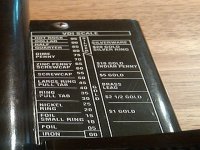DiamondDan
Sr. Member
- Apr 21, 2016
- 465
- 1,129
- Detector(s) used
- White's M6; Tesoro Compadre; Minelab E-trac; Bounty Hunter QD2
- Primary Interest:
- Metal Detecting
It will be my first Tesoro detector, so I figured something reasonably-priced and in a handy size would be a safe bet. Soon to be swinging the Compadre with the 5.75" coil! It was not much more expensive than a sniper coil for my White's, so I figured I would kill two birds with one stone: Trash-defying coil size and renowned Tesoro performance. I can't wait!

Upvote
0








